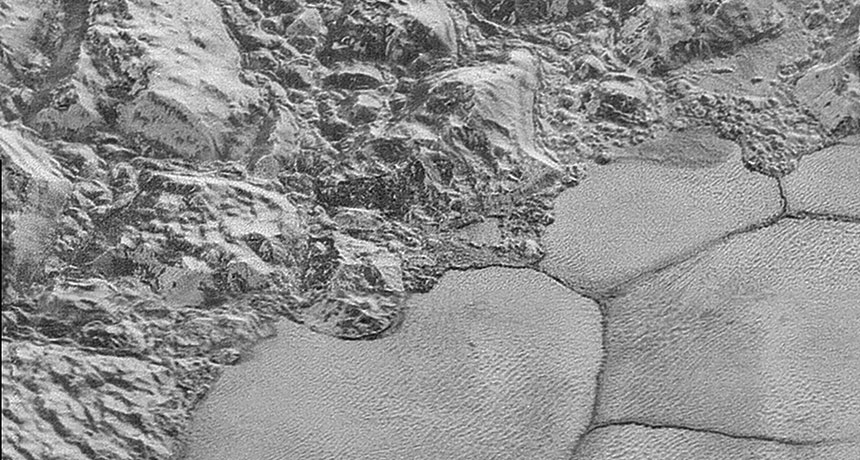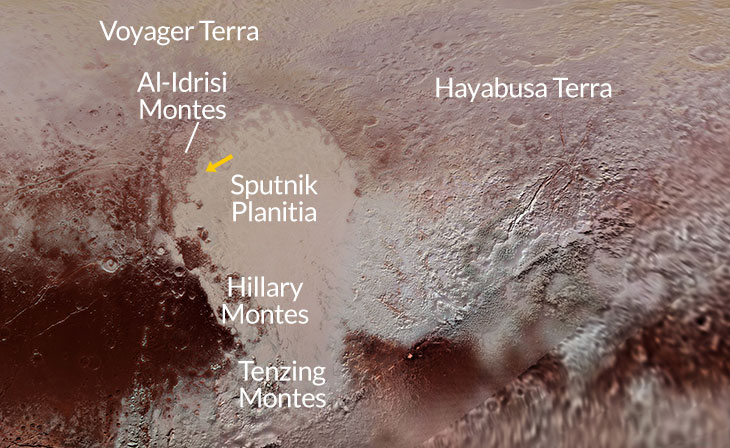Pluto’s heart has dunes of methane ice
The New Horizons spacecraft spotted the ripples during its flyby in 2015

Pluto’s dunes (center bottom and right) appear along a mountain range in this New Horizons image. The “sand” is made of methane ice.
SWRI, JHU APPLIED PHYSICS LAB, NASA
Pluto’s heart-shaped plains have stripes. Those stripes appear to be dunes, where methane ice makes up the “sand.”
The New Horizons spacecraft snapped images of those plains when it flew by Pluto in July 2015. Those images reveal hundreds of linear ridges that appear to be a new type of dune, say Matt Telfer and his colleagues. Telfer is a planetary scientist at the University of Plymouth in England. His team describes those dunes in the June 1 Science.
The ridges run parallel to a mountain range known as Al-Idrisi Montes. It sits at the western edge of Sputnik Planitia. Those wide plains of nitrogen ice form part of Pluto’s famous heart-shaped region. Winds between about 1 and 10 meters per second (2 to 22 miles per hour) likely carry methane ice from those mountains and across the plains.

The scientists used a computer model to investigate how the methane ice moves. The model even took into account Pluto’s thin atmosphere, which weakens winds. That model now proposes that Pluto’s winds would be strong enough to keep sand-sized methane ice particles moving once they get started. But the winds are probably too weak to lift the grains off the ground in the first place.
The grains could, however, get a lift from little puffs of air coming from Sputnik Planitia’s nitrogen ice. As the sun heats that ice, it turns into a vapor. That process by which solids turn directly into vapor is called sublimation (Sub-lih-MAY-shun).
Gusts of nitrogen vapor could lift the methane ice particles skyward and into the wind, the team’s research suggests.
“That’s a novel, interesting idea,” says Alexander Hayes. He’s a planetary scientist at Cornell University in Ithaca, N.Y., who was not involved in the work. But he knows about it and wrote a commentary about it in the same issue of Science. Still he cautions, sublimation alone could explain some of the features, without any need for wind.
Dunes are found across the solar system, from Earth to Mars and Saturn’s moon Titan. Each of these worlds has the ingredients for dunes. Those ingredients are a big supply of loose, grainy material and an atmosphere or fluid to move those grains around.
“When you look at dunes across the solar system, something that always strikes me is that they form the same patterns,” Hayes says. This is true “regardless of the environment,” he notes. Finding dunes on Pluto suggests that such features may be ubiquitous (Yu-BIH-qwih-tus). That means they are found in a lot of places — perhaps all over. “If you have the material and a way to move it, you form dunes,” Hayes says. “That’s what this is telling us.”







